There’s something about tilapia ceviche that just feels like Costa Rica on a plate — fresh, bright, and full of life. It’s one of those dishes that brings people together, whether it’s for a beach afternoon, a family lunch, or simply a craving for something light and full of flavor. With just a few simple ingredients like tilapia, lime, onion, tomato, and cilantro, you can make a dish that tastes like home, no matter where you are.
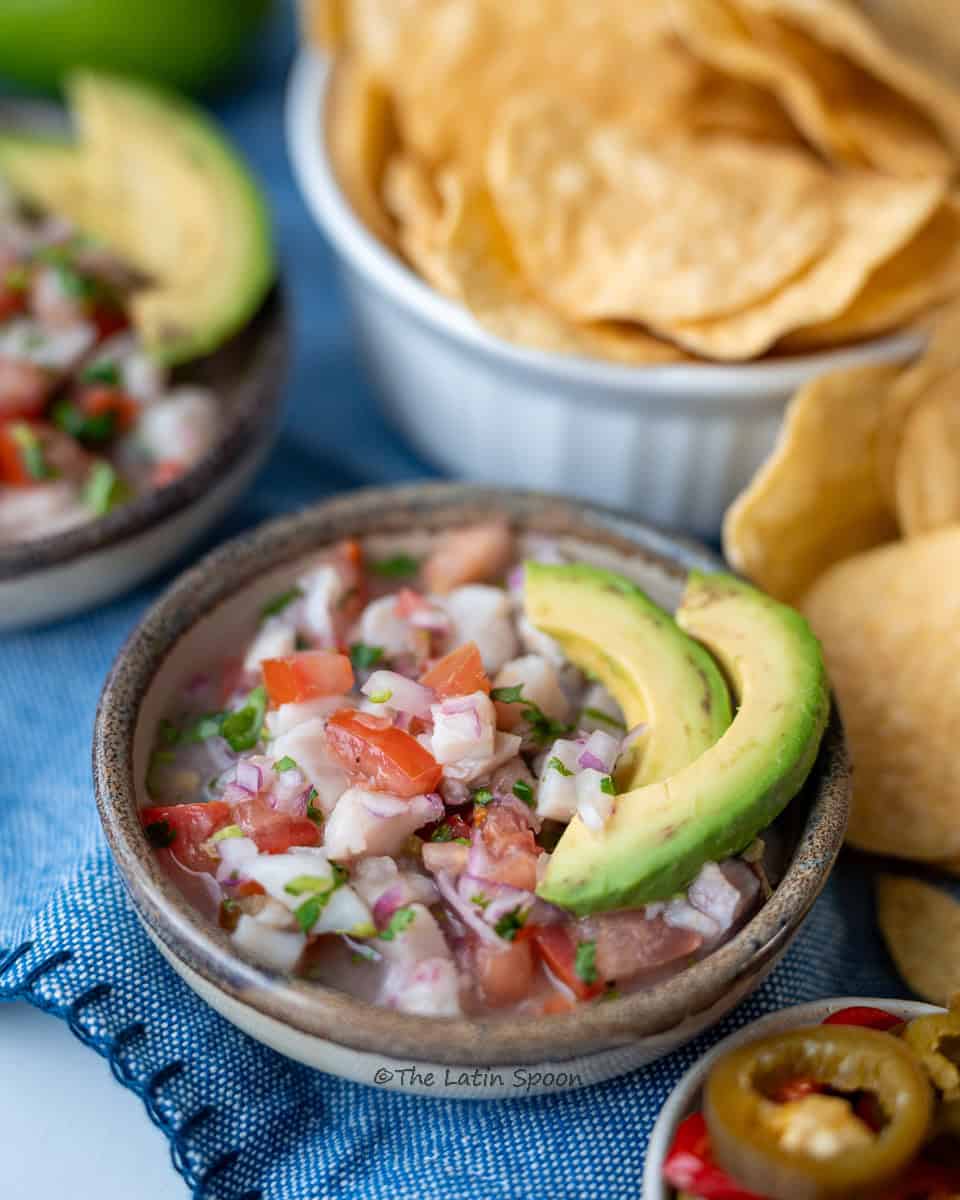
I’ve made this recipe so many times, and somehow it never feels repetitive. Some days I keep it classic with just fish, other times I mix things up, adding shrimp, a few chunks of ripe mango, or even a touch of spice for something bold. That’s what I love most about ceviche — it has the audacity to transform, to become whatever you want it to be. Every version tells its own story, but they all share that same freshness, that same spark of flavor that makes you stop and smile after the first bite.
This version is light, balanced, and simple, but it carries all that brightness I love. The freshness of the fish, the crisp onion, the kick from the lime. It all comes together like a little symphony of flavor. And while every region has its own way of making it, this one is mine: straightforward, full of personality, and made to be shared.
What is Costa Rican Ceviche?
Ceviche is a dish made with raw fish (it can also be prepared with shrimp, crab, octopus, or other shellfish) that is marinated in lime or lemon juice for at least 20 minutes. During this time, the acid in the citrus juice “cooks” the fish through a scientific process called denaturation, where the acid causes the proteins in the fish to change. This happens without any heat. As the process occurs, the fish changes color — it becomes more opaque, almost white — and its texture turns firm and pleasant to eat. Even though the fish is still technically raw, this process makes it safe for human consumption.
Now, this doesn’t mean ceviche is completely free of bacteria, parasites, or harmful pathogens. It simply means the fish has been prepared in a way that makes it safe to eat, but there’s still a risk of foodborne illness. That’s why food safety precautions are essential when preparing ceviche: always use high-quality fish, ask your fishmonger for sushi-grade fish, buy from a trusted source, keep it refrigerated at all times, and serve it immediately after preparation. (Visit the FAQ to learn more about how long ceviche is good for.)
In Costa Rica, the term ceviche has taken on a broader meaning. For us, anything that’s marinated in lemon juice is considered a ceviche — not just fish. That’s why you’ll find plantain ceviche, heart of palm ceviche, pejibaye ceviche, and many other creative versions. Each one reflects the Costa Rican way of enjoying fresh, simple ingredients with a bright citrus flavor.
(And if there’s a particular version you’d like to see on the channel, let me know in the comments!)
Let’s move into the Ingredients section for your Costa Rican-style Tilapia Ceviche
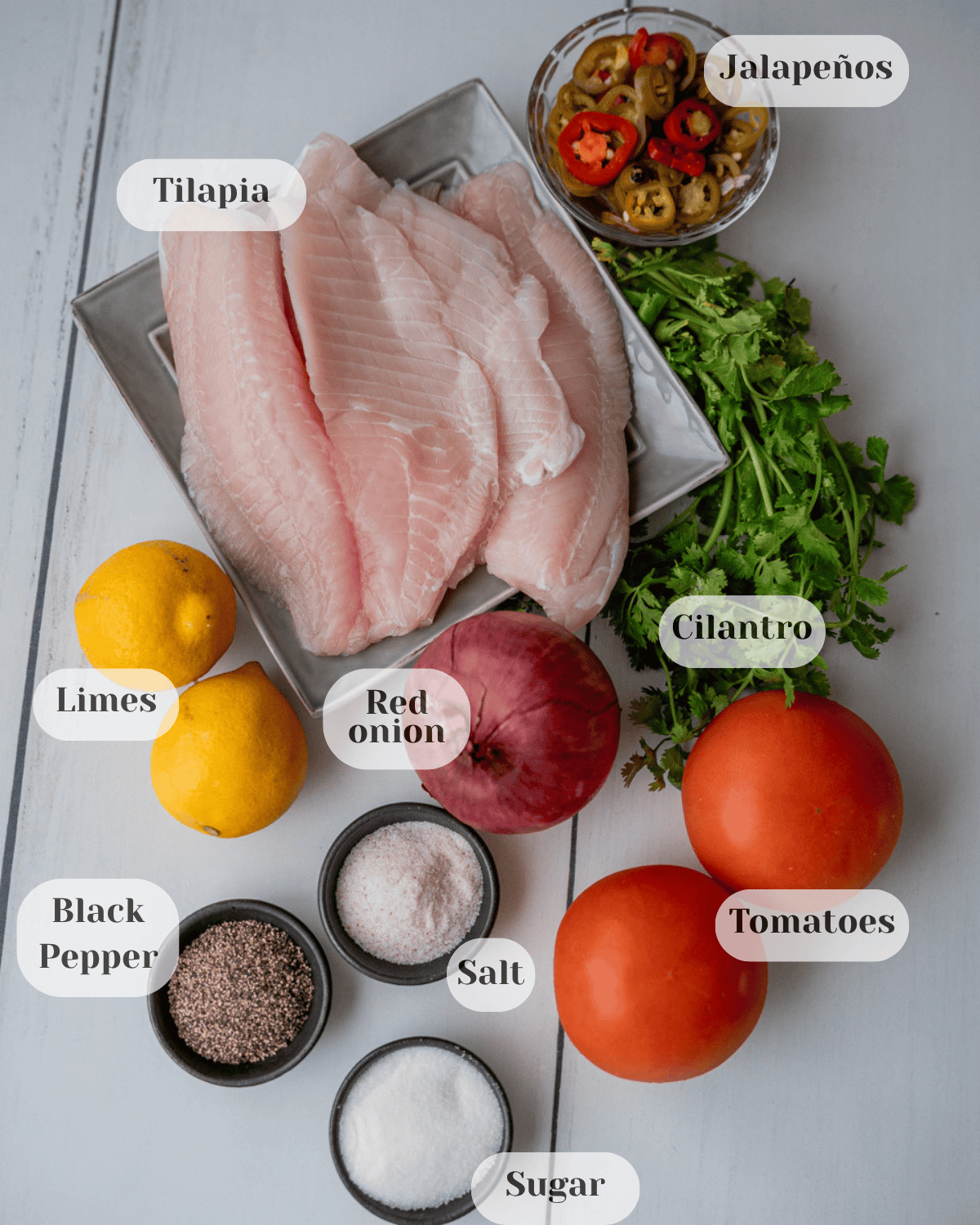
Ingredients for Ceviche
I want you to feel bold and inspired to create your own ceviche at home, so please use the following ingredients as a guide, not as the only options available.
🐟 Tilapia
For this recipe, I’m using fresh tilapia, but feel free to substitute it with sea bass, cod, or even shrimp if you prefer. Tilapia is mild and tender, which makes it perfect for soaking up all that citrus flavor.
🧅 Red Onion
I love using red onion for ceviche because it adds color and a little sharpness. If you prefer a milder flavor, go with sweet or yellow onion — or simply use whatever you already have at home.
🍋 Limes and Lemons
In this recipe I prefer to mix limes and lemons — they each bring a different kind of brightness. Limes are sharper, lemons are smoother, and together they create the perfect balance.
🍅 Tomatoes
For this recipe, I used beefsteak tomatoes, but feel free to use any variety you like. Even cherry tomatoes work beautifully — just cut them in halves or quarters.
🌶️ Pickled Jalapeños
I’m using my own recipe for pickled jalapeños (recipe coming in about two weeks, stay tuned), but canned jalapeños work just fine. And don’t forget about fresh jalapeños — they’re amazing too!
🌿 Cilantro (or Culantro)
Cilantro is the star of this recipe, and it should always be fresh. You can swap it for culantro if that’s what you have — the flavor is stronger, but equally delicious. Even though there’s a dried version, I really recommend using fresh leaves for that burst of flavor and vibrant color that makes the ceviche come alive.
🧂 Salt
I prefer using Unrefined Mineral Salt in my recipes, but honestly, any kind of salt works just fine. Use whatever you have at home — it won’t change the flavor or the quality of your ceviche.
Black Pepper
The flavor of freshly cracked black pepper tastes amazing in this recipe — it adds a bright, fresh touch. But if you already have it pre-ground, like I did this time, that works perfectly too.
Sugar
I used regular white sugar to balance the flavors, but you can use any substitute you like. You can even add a splash of 7UP — it gives a gentle sweetness and adds a bit more liquid to the ceviche. This is a good technique if you want your ceviche to be very caldoso (see the FAQ for more on this).
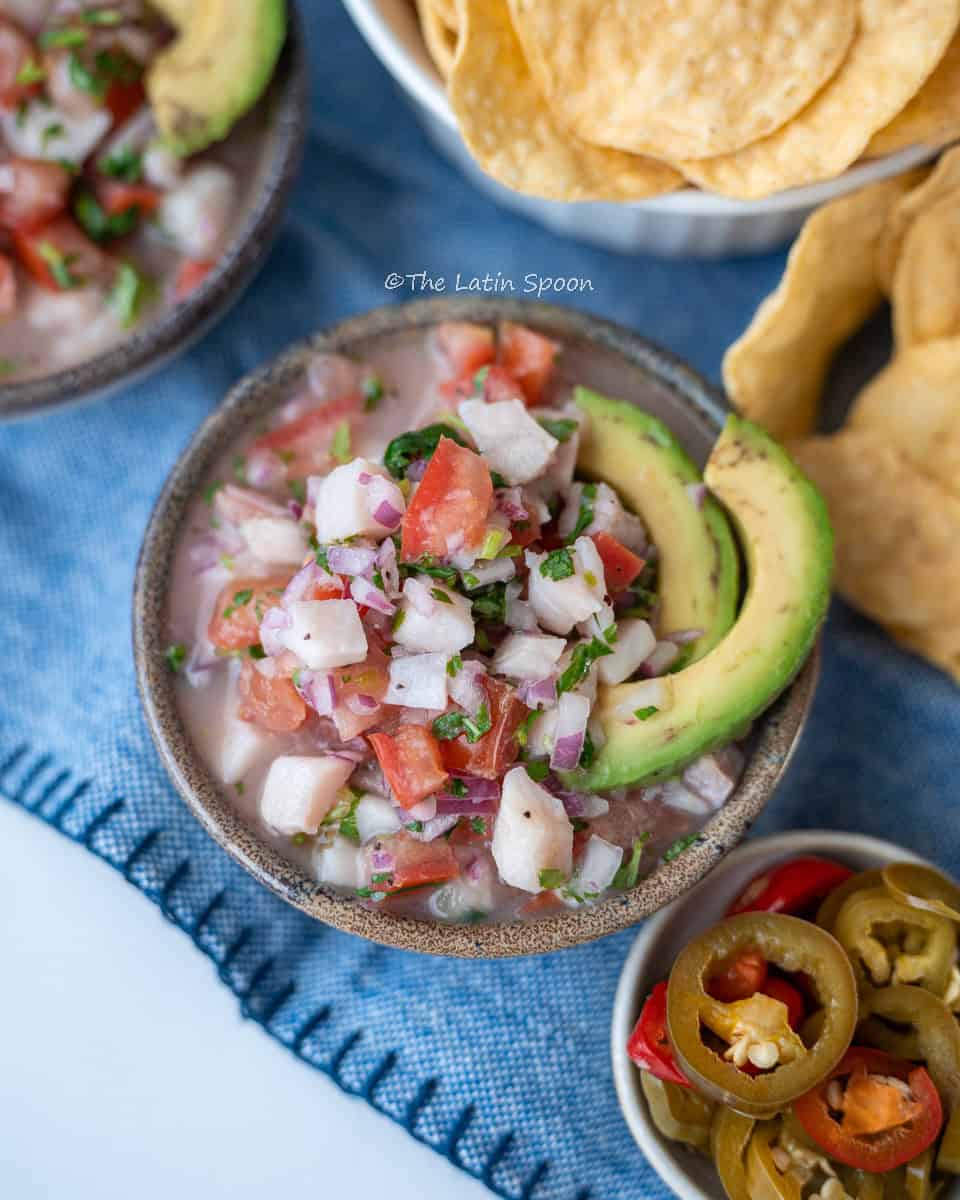
💡 Extra Tips for Making the Best Ceviche Ever
- Freshness is everything. Look for fish that’s firm, with no strong smell, and buy it the same day you plan to make your ceviche.
- It’s best when all the pieces of fish are cut to about the same size. It doesn’t matter if they’re big or small, what matters is that they’re even, so every bite feels balanced and the ceviche looks beautiful when served.
- Use fresh lime juice only, it makes a world of difference. Bottled lime juice tends to taste flat or bitter, so squeeze it fresh if you can, it’s worth the extra minute.
- Refrigerate your ceviche for about 20 to 30 minutes before serving. That’s enough time for the lime to finish “cooking” the fish and for all the flavors to come together. Serve it right after chilling.
- Avoid using an aluminum or copper bowl when mixing ceviche. The acid from the citrus juice reacts with those metals and can leave a metallic taste in your dish. Stick to ceramic, glass, or stainless steel bowls instead.
Step-by-step photos
Now it’s time to roll up our sleeves and make some kitchen magic happen-bright, zesty, and full of flavor, just like a perfect summer afternoon.
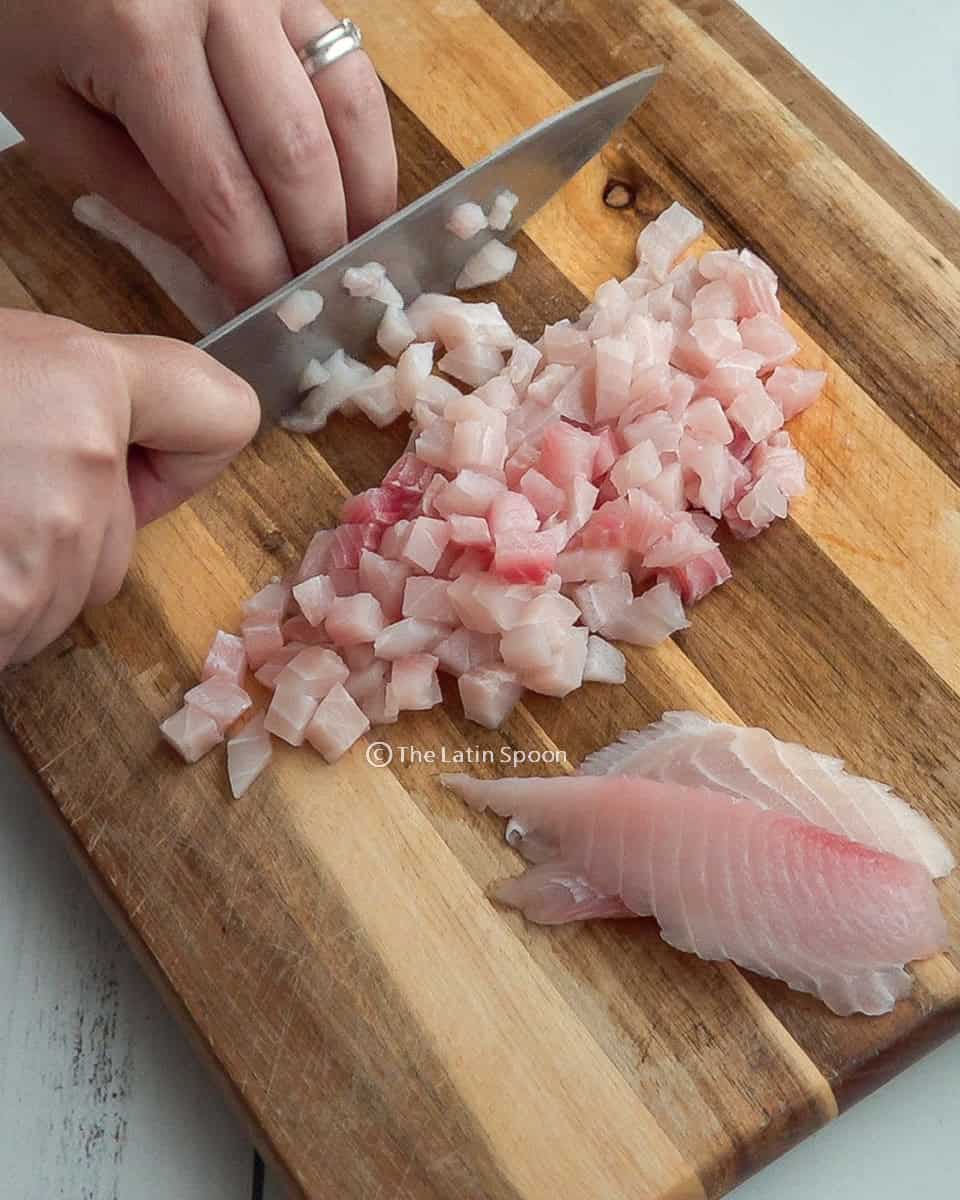
Step 1: Prepare the fish.
Cut the thinner side of the fillet into strips, then into small cubes. Do the same with the thicker part, slicing it in half first so everything ends up about the same size.
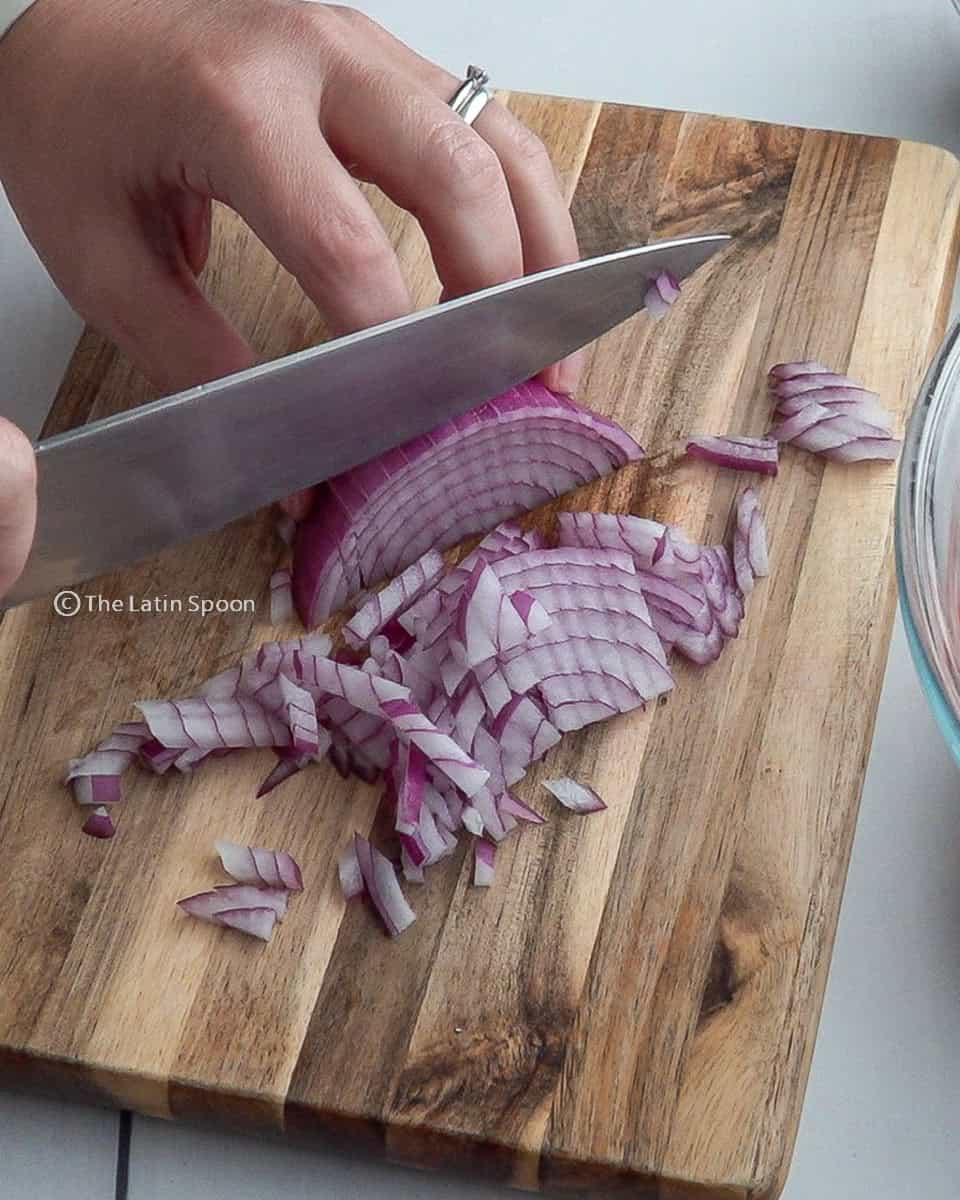
Step 2: Dice the onion
Cut the onion in half, remove the skin, slice it into thin strips, and then cut diagonally to create small cubes.
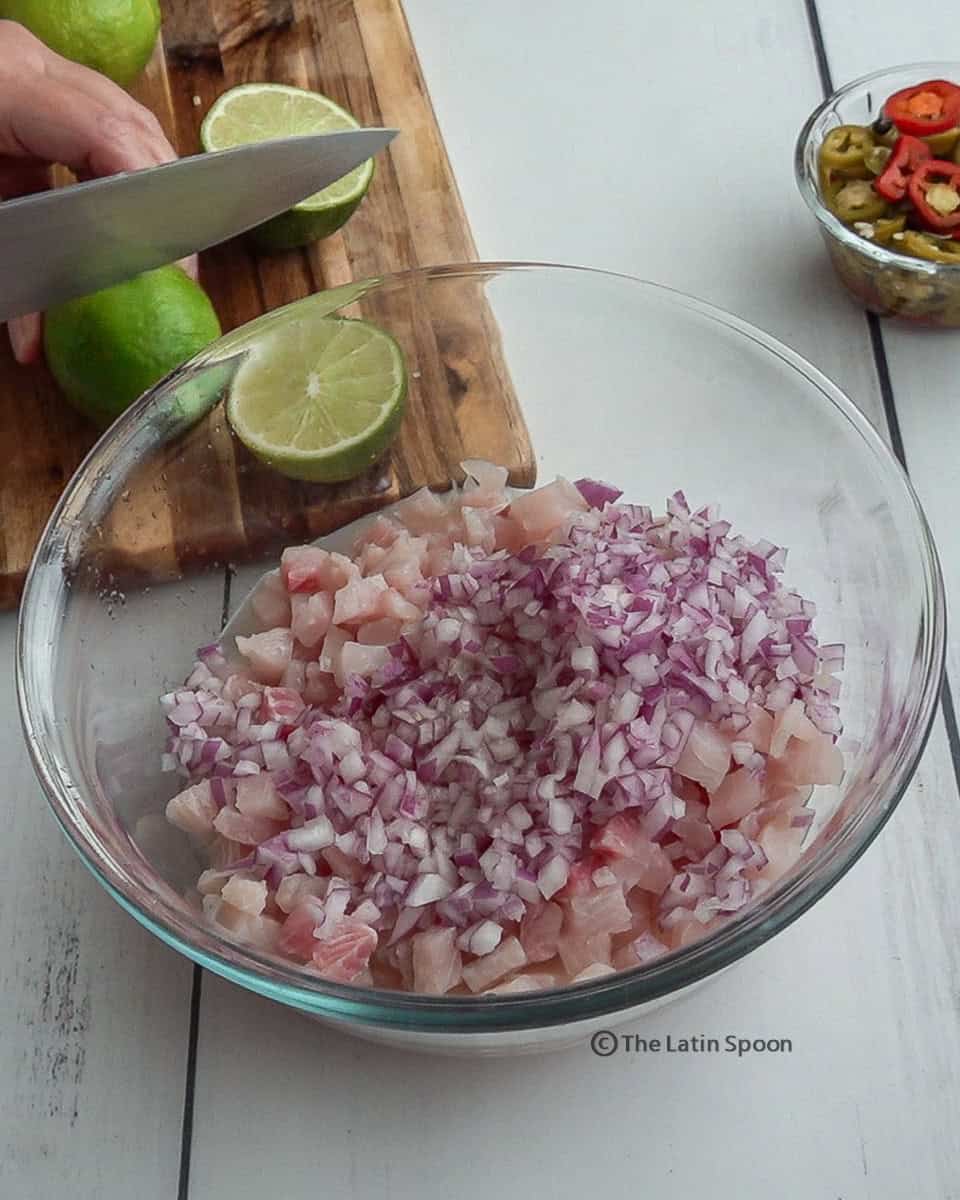
Step 3: Add the onion and Lemons.
Add the onion to the bowl with the tilapia. Cut the lemons in half and squeeze the juice over the diced tilapia.
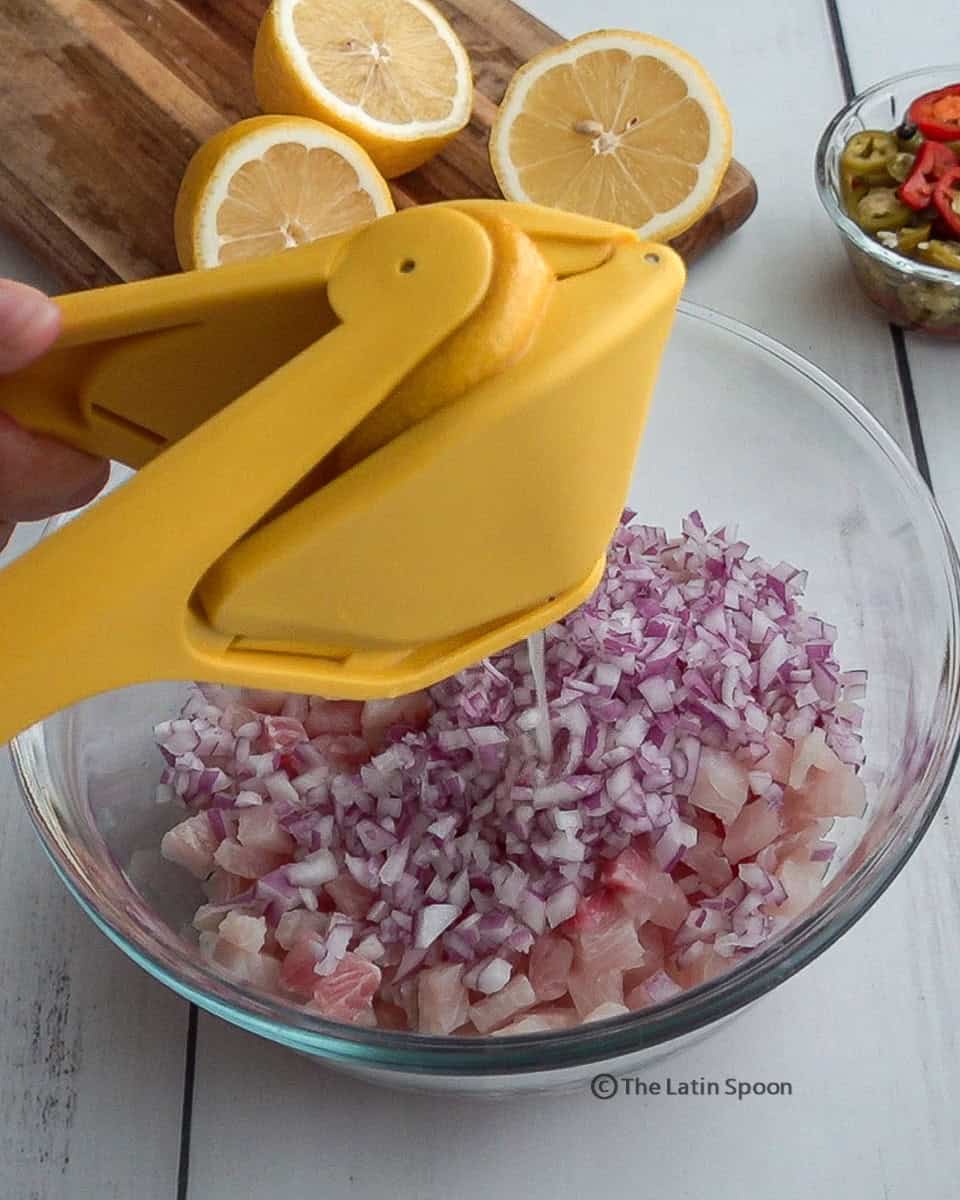
Step 4: Cover the fish with enough lemon juice
The recipe calls for 8 to 10 lemons, but you may need more or less depending on how juicy they are.
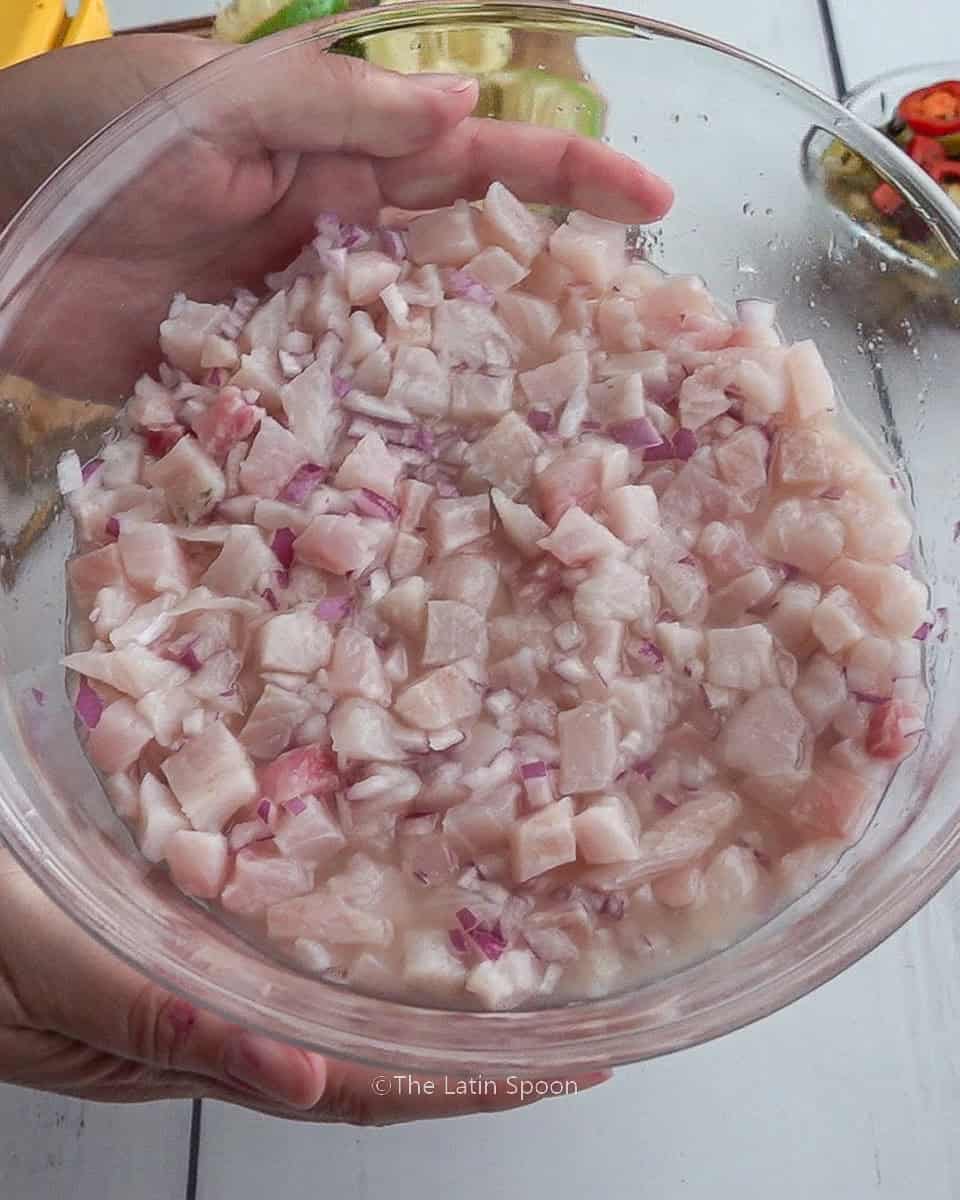
Step 5: Let it rest.
Set it aside. The lime will keep “cooking” the fish while you get the rest ready.
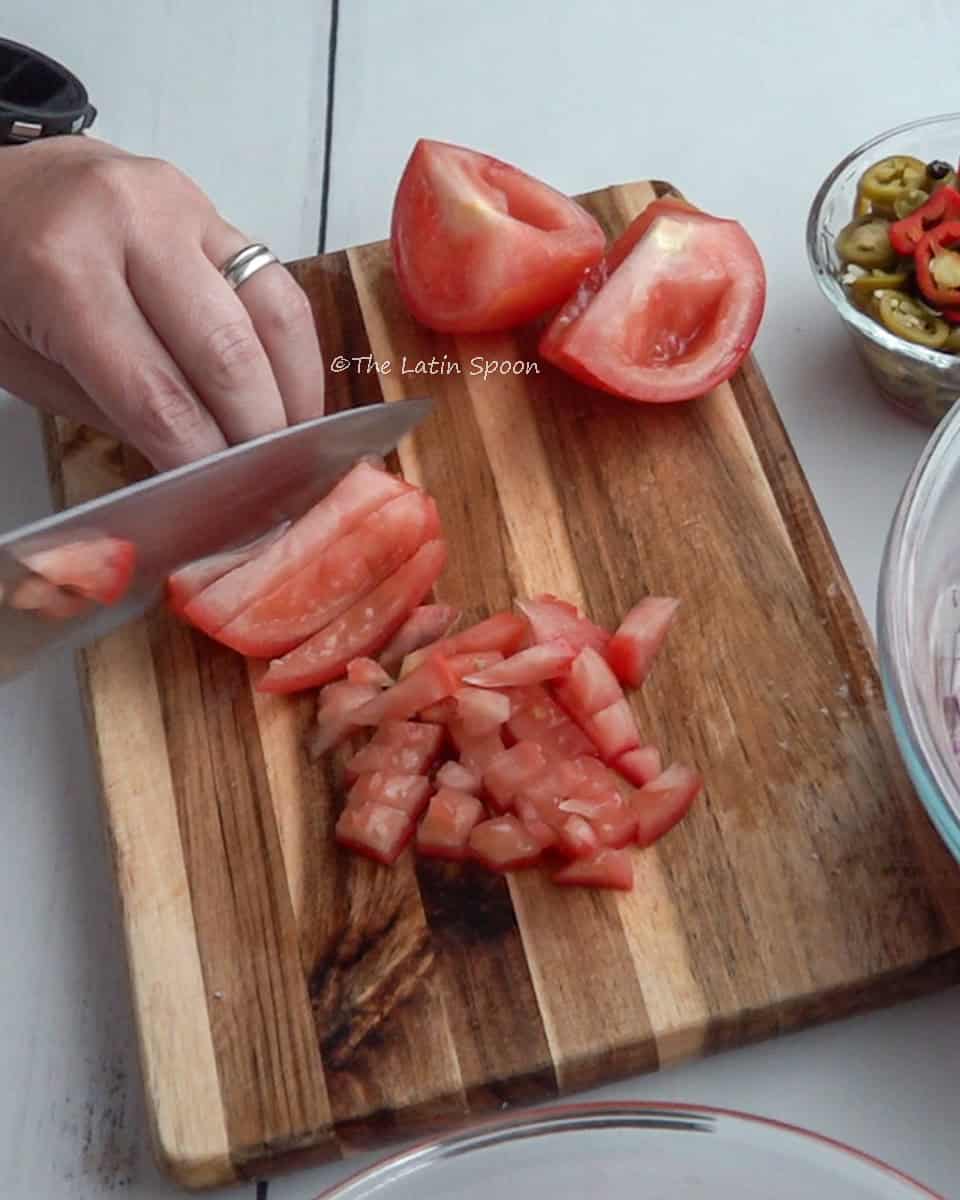
Step 6: Prepare the tomato.
Cut the tomato in half, then into wedges, and scoop out the seeds. Then, cut the tomato flesh into small cubes — about the same size as the tilapia.
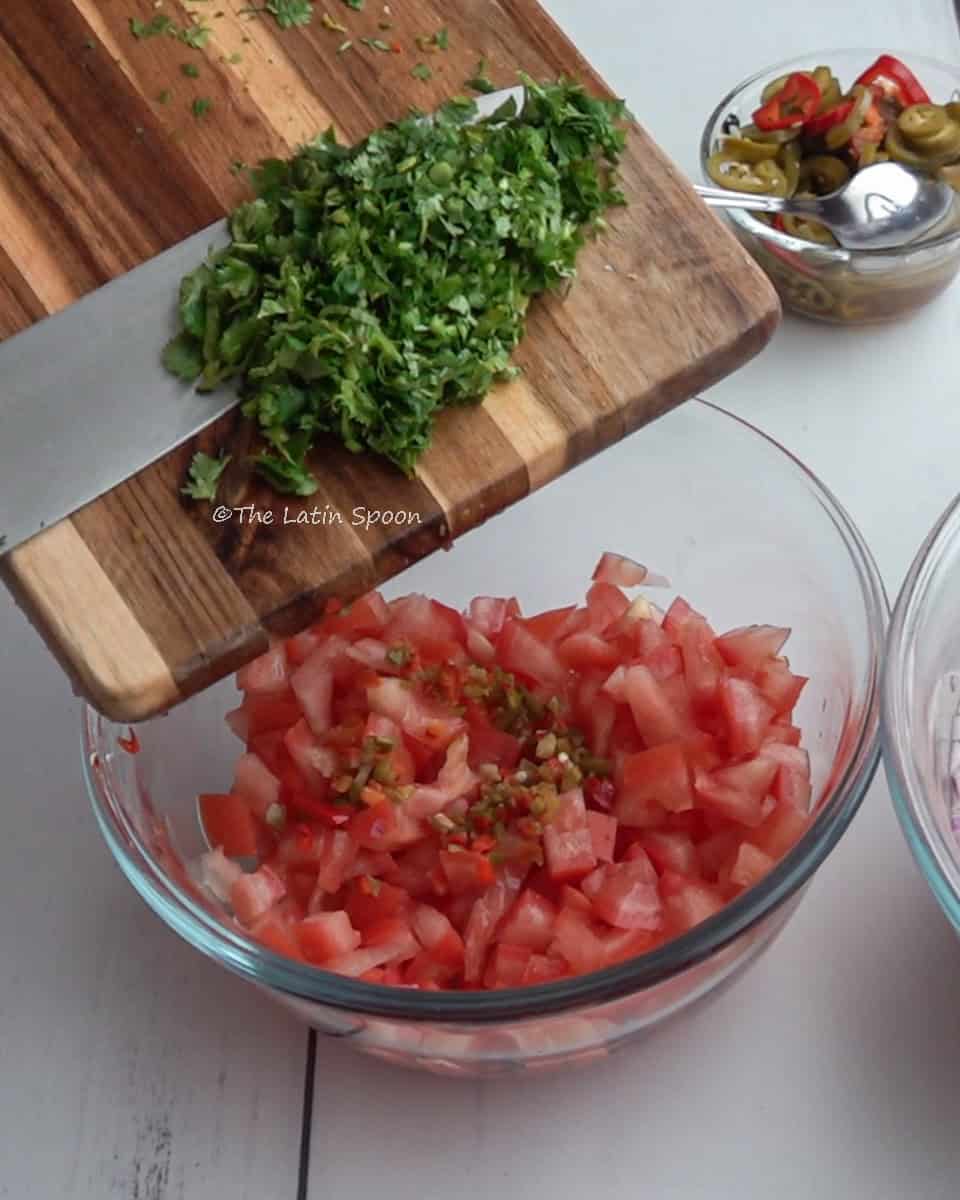
Step 5: Add jalapeño and cilantro.
Add chopped pickled jalapeños to the bowl with the tomato. Wash and finely chop the cilantro (or culantro), add it in, and give everything a quick mix.
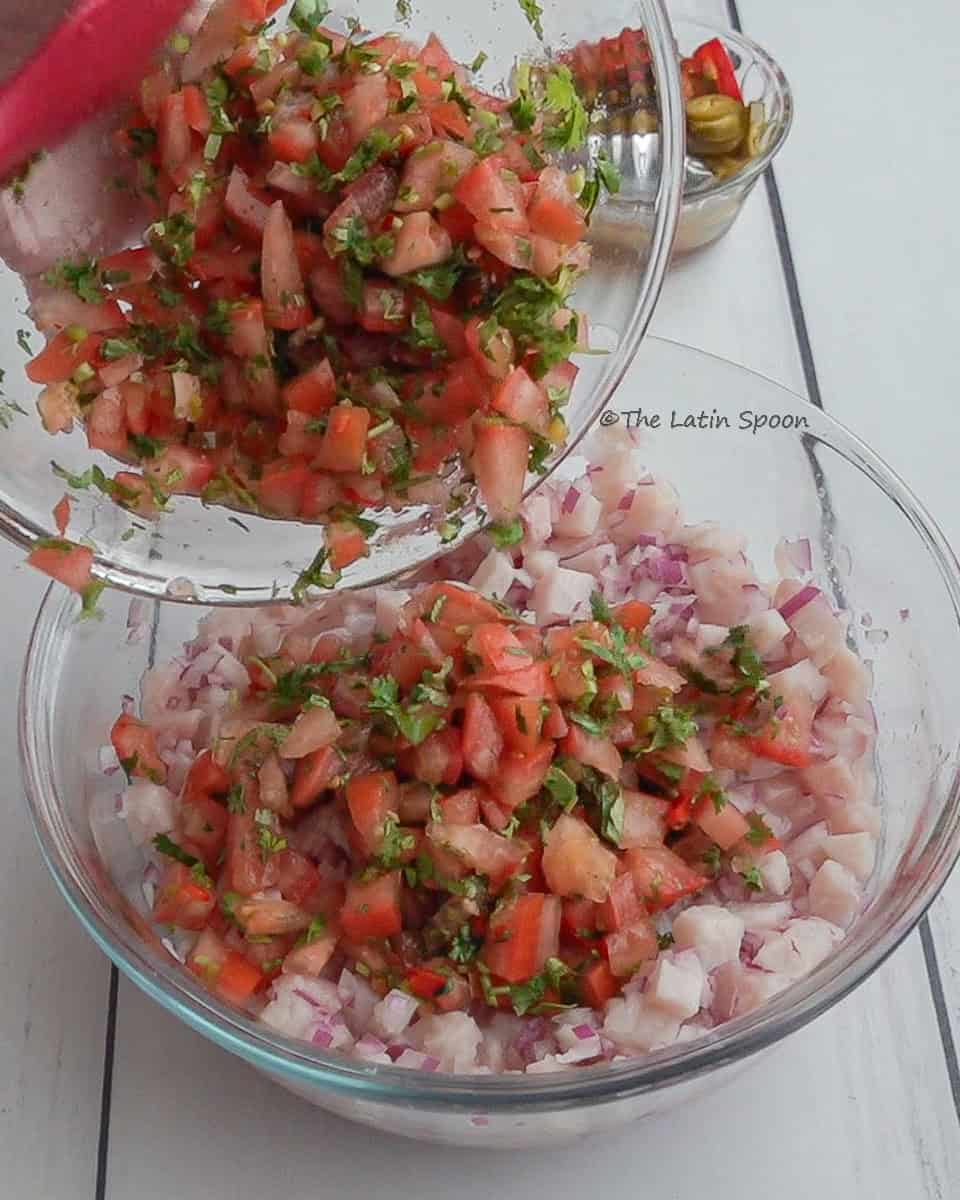
Step 6: Combine everything.
Add the tomato, cilantro, and jalapeño mixture to the ceviche base.
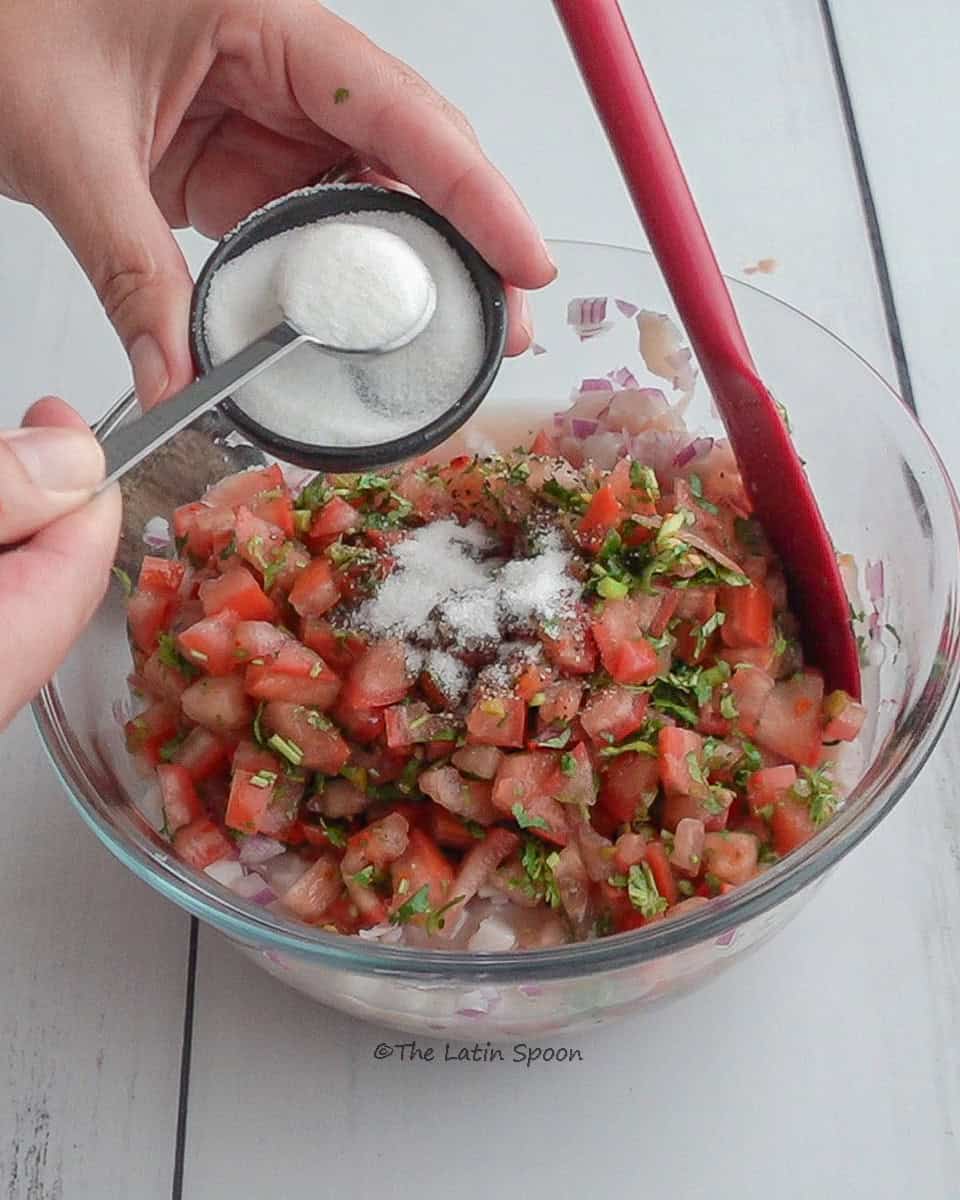
Step 5: Add sugar.
Add the sugar, black pepper, and salt, then mix everything together until the flavors taste just right.

Step 6: Serve and enjoy.
Serve it with a few slices of avocado, and enjoy it with tostada chips or your favorite crackers.
💡 All Your Tilapia Ceviche FAQs Here
Just a little sugar helps balance the acidity from the lime juice. It doesn’t make this tilapia ceviche sweet — it simply smooths out the sharpness and gives it a perfect flavor balance.
About 20 to 30 minutes is usually enough. You’ll know it’s ready when the fish turns opaque and firm. Letting it sit too long can make the texture a bit rubbery.
You can prep everything in advance and mix it shortly before serving. If you let it sit too long (more than a few hours), the fish can over-marinate and lose that fresh, bright flavor.
Not at all. Both are optional — the tomato adds color and jalapeños a little kick, but you can skip or substitute them with what you like.
Ceviche is best enjoyed the same day it’s made. You can refrigerate it for up to 24 hours, but after that, the texture of the fish starts to change and the flavors lose their brightness.
Spoiled ceviche can turn slimy and may even start changing to a grayish color. The smell is usually the biggest giveaway — ceviche will tell you right away, “Hey! I’m no longer good.”
My rule of thumb is simple: if you’re unsure about the smell or appearance, don’t eat it. Trust your gut — it has been saving humans for thousands of years.
Since ceviche can be made in many ways, in Costa Rica people often prefer it very caldoso, meaning it has plenty of juice or broth to enjoy with the fish. Because you don’t want to eat straight lemon juice, other liquids are sometimes added to balance the flavor — like sparkling water, clear sodas such as 7UP or ginger ale, and even orange soda in some variations.
🐟 Why You’ll Love this Tilapia Ceviche?
Ceviche is part of the Costa Rican street food repertoire, but it’s also enjoyed at parties, get-togethers, and family gatherings. It’s not just something you eat on the go; it’s a dish that’s deeply rooted in the culture and enjoyed on a regular basis. Because fish is so easy to find on both the Pacific and Atlantic coasts, ceviche is loved all year round, whether it’s raining, sunny, or windy.
This ceviche is quick to make, fresh, lemony, and juicy. It’s a recipe I’ve tested for many years, and it’s so good you’ll want to make it again and again.
I love ceviche and have so many other versions — some with fruit (yes, fish and fruit are a delicious combo), others with coconut milk or different types of fish. I can’t wait to share them all with you. Just let me know in the comments if you’d like to see more ceviche recipes.
In the meantime, I’ll be sharing more Costa Rican recipes with you, like:
Heart of Palm Salad
Costa Rican Gallo Pinto
Hot Dogs with Cabbage
Yucca Flower Picadillo
See you next time with more delicious Costa Rican dishes!
Besitos (kisses),
Mara
Tilapia Ceviche (Costa Rican Style)
Equipment
- Bowls and spoons
- chopping board and knife
- lemon juicer
Ingredients
- 2 lbs of fresh tilapia
- 1 red onion
- 8-10 limes/lemons
- 3 tomatoes
- 1 small bunch of cilantro
- 1 teaspoon of black pepper
- 2 teaspoons of sugar
- 2 ½ teaspoons of salt
- Chile jalapeño to taste
Instructions
- Separate the thinner part of the tilapia from the thicker part. Cut the thin pieces into long strips, then into cubes. Slice the thicker part in half to make it thinner, and repeat the same process so all pieces are about the same size. Place the fish in a mixing bowl.
- Cut the red onion in half, remove the skin, slice lengthwise, then dice. If you prefer smaller pieces, mince to your liking. Add to the bowl with the fish.
- Squeeze enough lime or lemon juice to fully cover the fish and onion. Mix to coat evenly. Let sit while you prep the rest.
- Optional: Cut tomatoes into wedges, remove the seeds, then slice into strips and dice. Add finely chopped pickled jalapeños and chopped cilantro to the same bowl. Give it a quick stir just to combine, then add this mixture to the ceviche bowl.
- Add black pepper, sugar, and salt. Mix gently to combine.
- Refrigerate for at least 20 minutes so the citrus can finish “cooking” the fish.
- Taste and adjust seasoning with more salt, black pepper, jalapeños, or a touch of sugar if needed.
- Serve in small cups. Optional: garnish with avocado slices and serve with tortilla chips or regular crackers.
Video
Notes
- Use firm, fresh fish with no strong smell, and buy it the same day you plan to make your ceviche.
- Keep all fish pieces about the same size so every bite feels balanced and the ceviche looks beautiful when served.
- Bottled lime juice can taste flat or bitter. Freshly squeezed makes a world of difference.
- Refrigerate for 20–30 minutes so the lime finishes “cooking” the fish and all the flavors come together. Serve right after chilling.
- Acid reacts with aluminum or copper and can leave a metallic taste. Use ceramic, glass, or stainless steel bowls instead.
- Ceviche is best enjoyed the same day. You can refrigerate it up to 24 hours, but after that the fish loses its texture and flavor, and the risk of foodborne illness increases.
- In Costa Rica, we love ceviche caldoso, with plenty of broth or juice. Some people add sparkling water, clear sodas like 7UP or ginger ale, or even orange soda to balance the acidity.
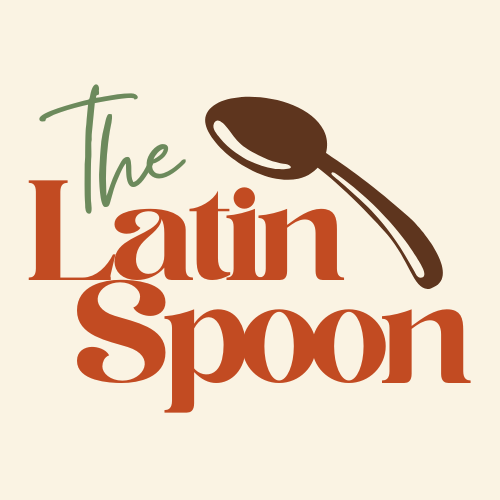
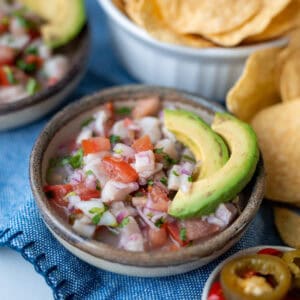
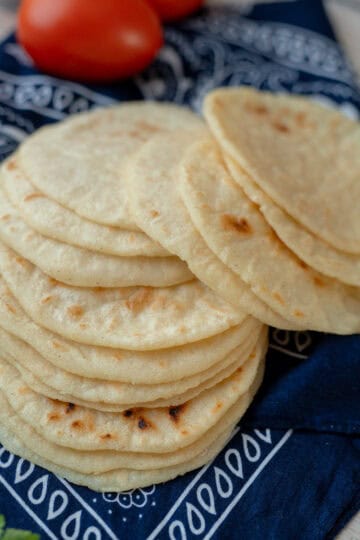

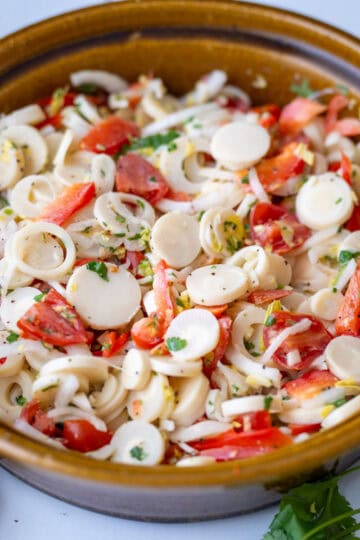
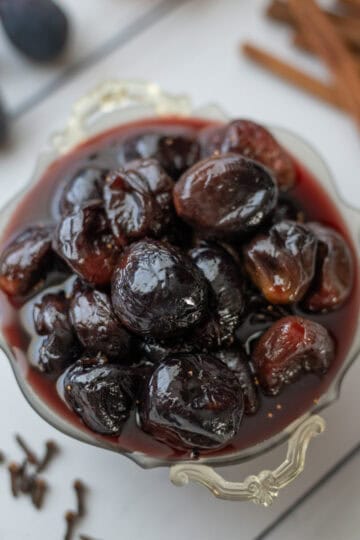
Leave a Reply